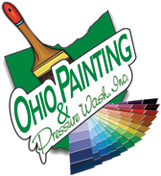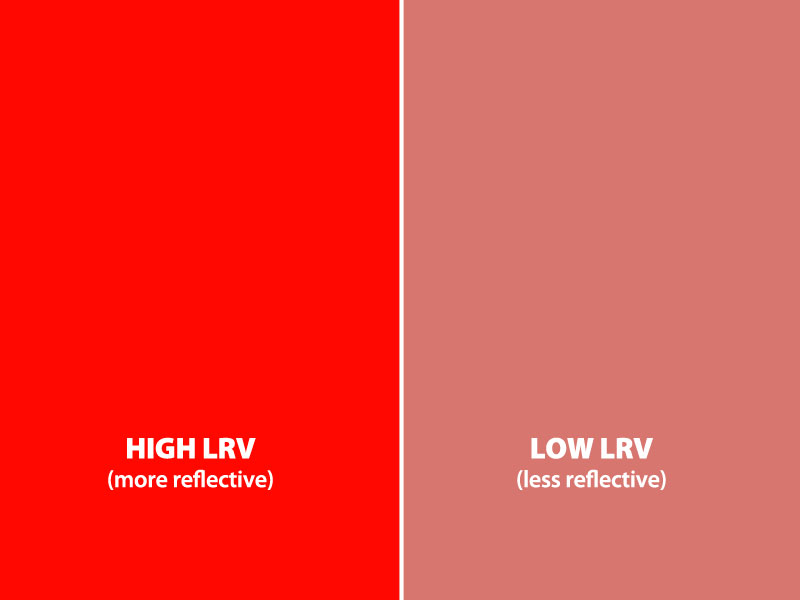LRV stands for light reflectance value. It measures how much light will be reflected by the color.
The LRV scale goes from 0 to 100. Zero is pure black, 100 is absolute white. In reality, our perception of paint colors ranges from about 5 for purest black and 85 for purest white.
LRV as an absolute measurement, meaning that if a color has a score of 50, it means it will reflect 50% of the available light. 50% of a strong light will be “lighter” than 50% of a weak light. But it will still be 50% of the available light.
LRV As a Tool in Paint Color Selection
In previous articles we’ve written about using the direction the front of your house faces as a starting point for your paint color selection. As discussed here, daylight strikes the north, south, east and west sides of your home differently. Each exposure has different characteristics that will affect how your paint color looks; picking one exposure as the focus-point will simplify a complicated decision.
Where LRV can assist you is in helping you find specific paint color choices that will stand up pleasingly to the lighting challenges presented by your particular exposure.
In Northeast Ohio we get a mixture of bright, sunny days and gray, cloudy days. Houses facing north will be dealing with the most coolness with respect to color and a cool, stable light. Southern facing facades receive the strongest, most direct sunlight, but where the light hits changes throughout the day. Shadows will be strong. Eastern-facing facades will be bright in the morning, with grey afternoon light and Western-facing facades will be grey in the morning with strong, warm light in the afternoon, with the longest shadows of all.
The lower the LRV score, the more the color will absorb light; the higher the score, the more it will reflect light. So a color with a high LRV score will reflect more light than the same color with a lower LRV score. The higher LRV may just right on a cloudy day, but wash out on a sunny day. A lower LRV version may look more pleasing on both sunny and cloudy days.
Mid-range LRV scores (50-65) typically hold their own in northeast Ohio’s sunny-cloudy-sunny-cloudy weather, meaning they neither wash out on bright days nor become dingy or depressing on cloudy days.
Evaluate Your Front Facade
First:
determine the direction your home’s front face.
Second:
review the characteristics of that exposure’s light, which will help you know what to look for.
Third:
study your home’s front at different times of the day (and if you have the time, year) and track how the light affects your perception of your existing facade’s color. Note when the color looks most pleasing to you. Note when it looks less or the least pleasing to you and analyze why. Does your house look best in bright sunshine, moderate sunshine, or when it’s cloudy? Do you have a lot of summer foliage that might add a green glaze to your facade and if so, does that improve or detract from your perception?
There are other factors to consider as well: the underlying tints in the color will render it warmer (yellow, orange, red undertones) or cooler (blue, green or violet undertones), and Chroma. (Chroma is the intensity, purity or saturation of a color. Think candy-apple red versus adobe-red.) The use of LRV in the mix relates specifically to how the color reflects light, not depth of color itself (Chroma).
LRV won’t tell you whether to choose a blue, a green, a tan, a gray, a white or any other color. But it can help you choose which blue (or green or tan or gray or white) to use once you’ve narrowed your preference down.

